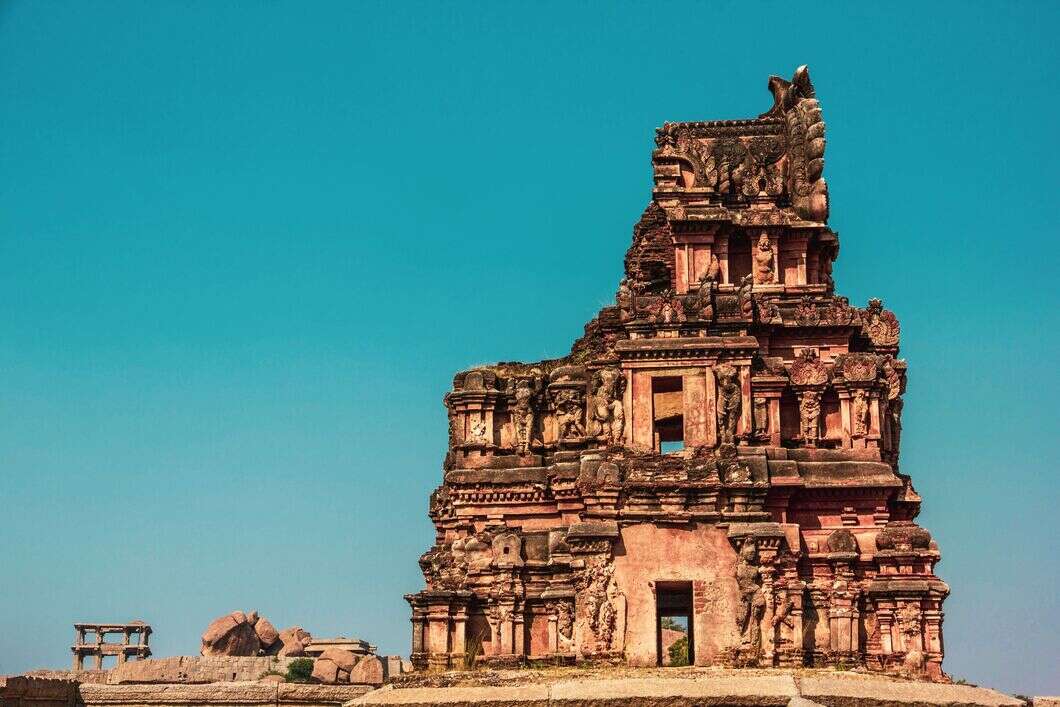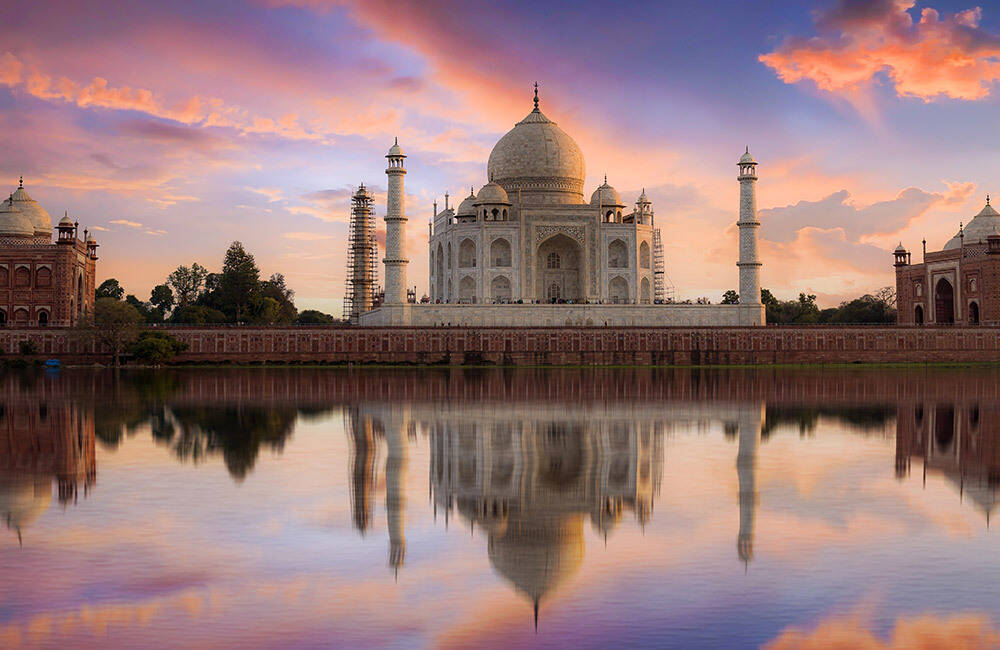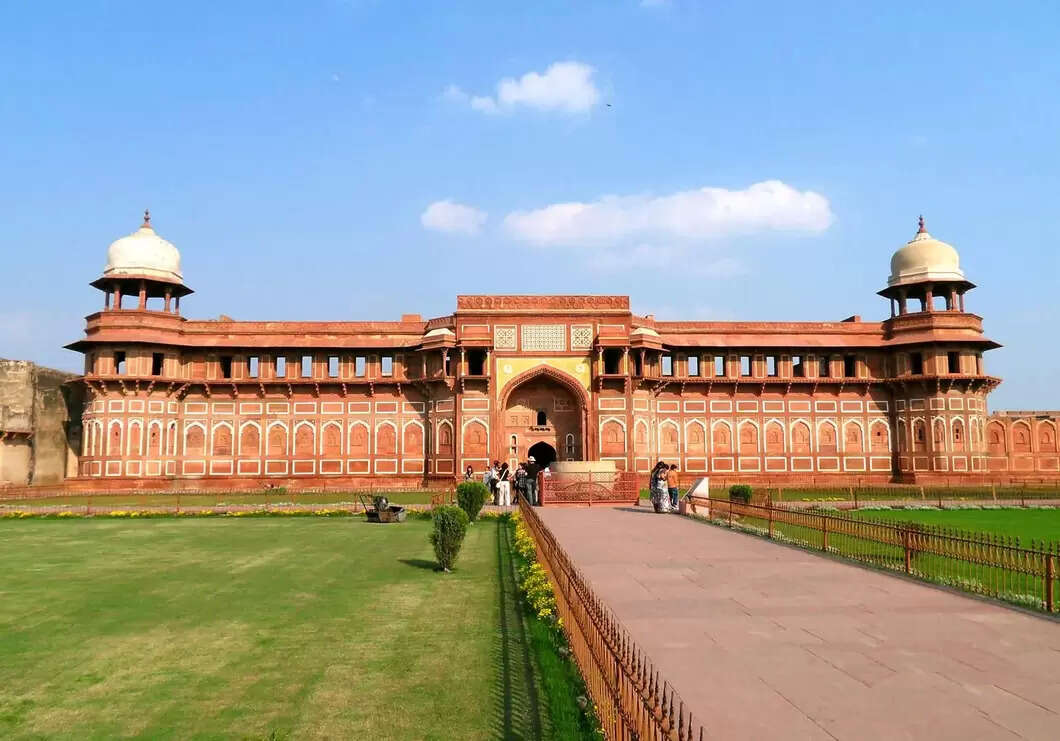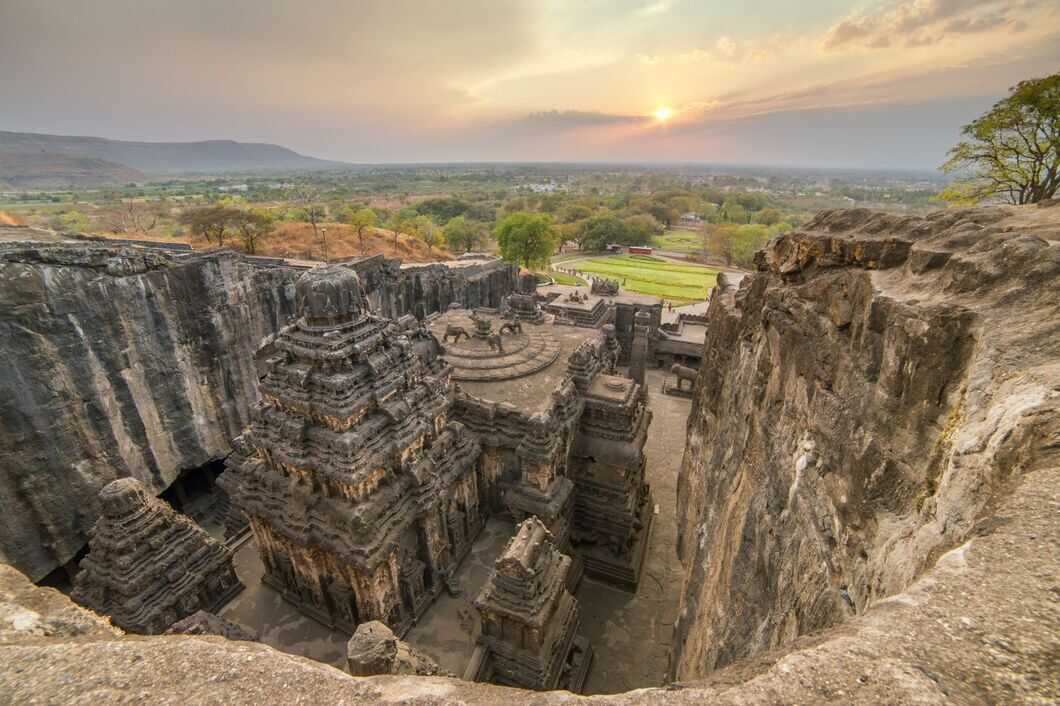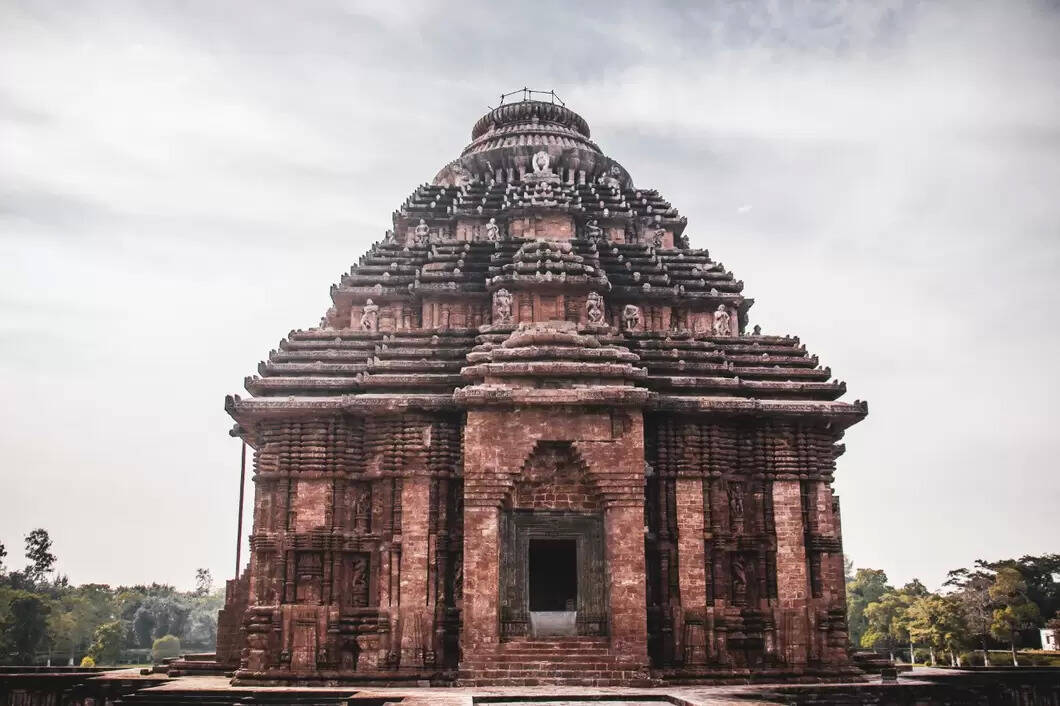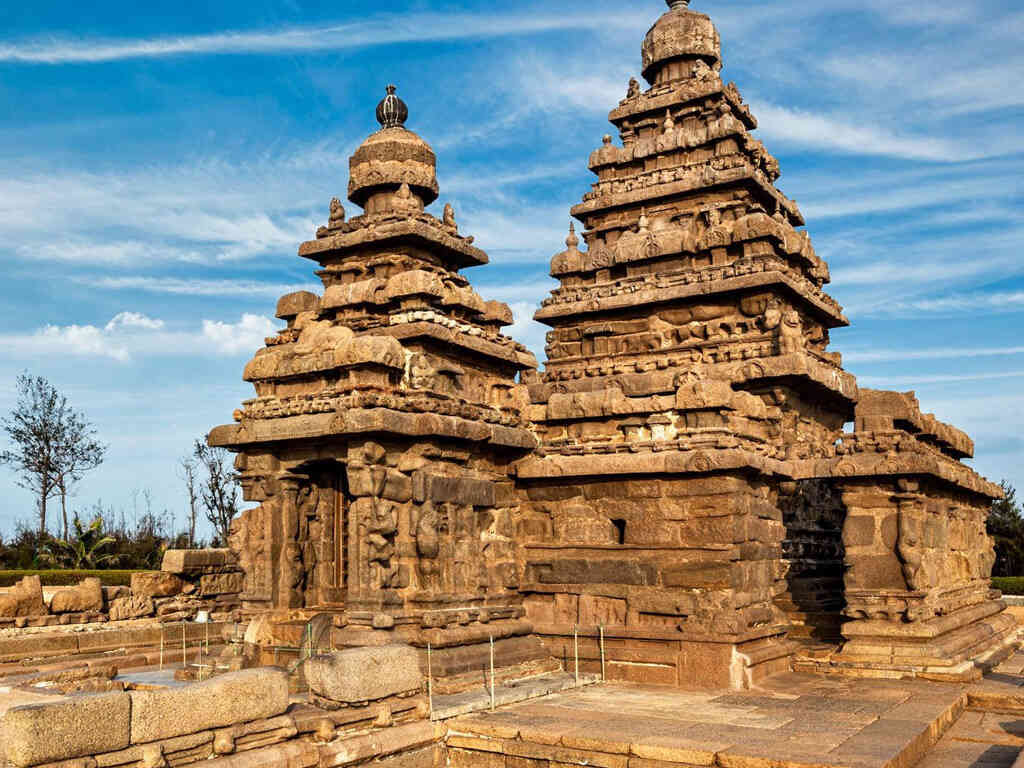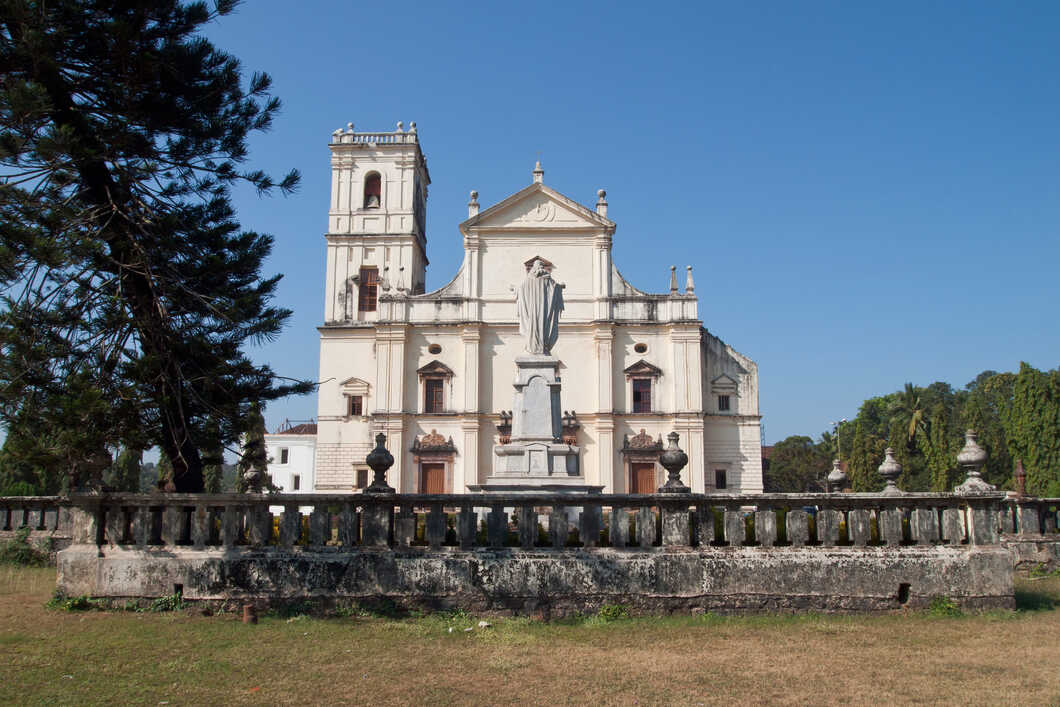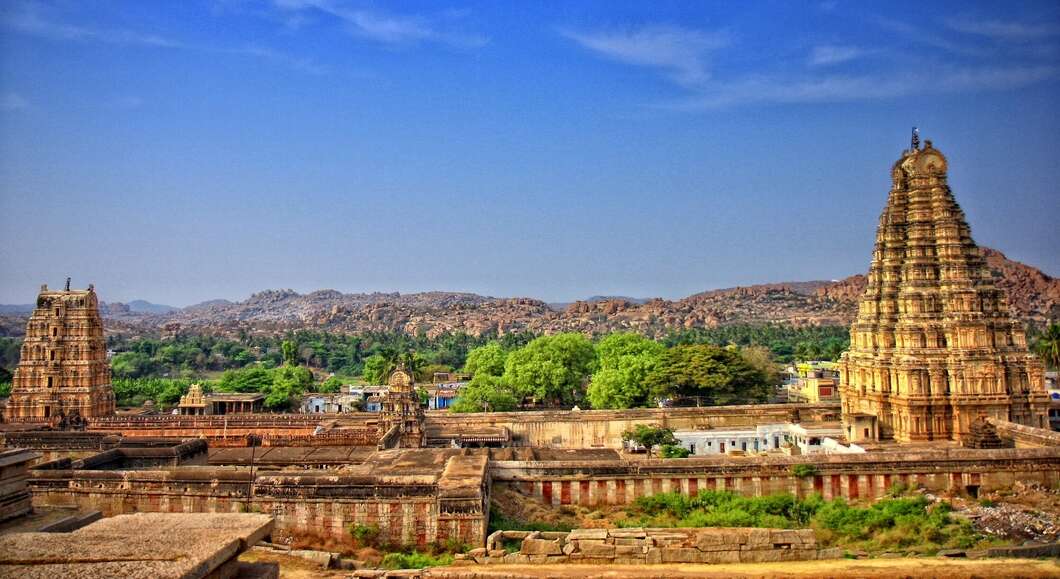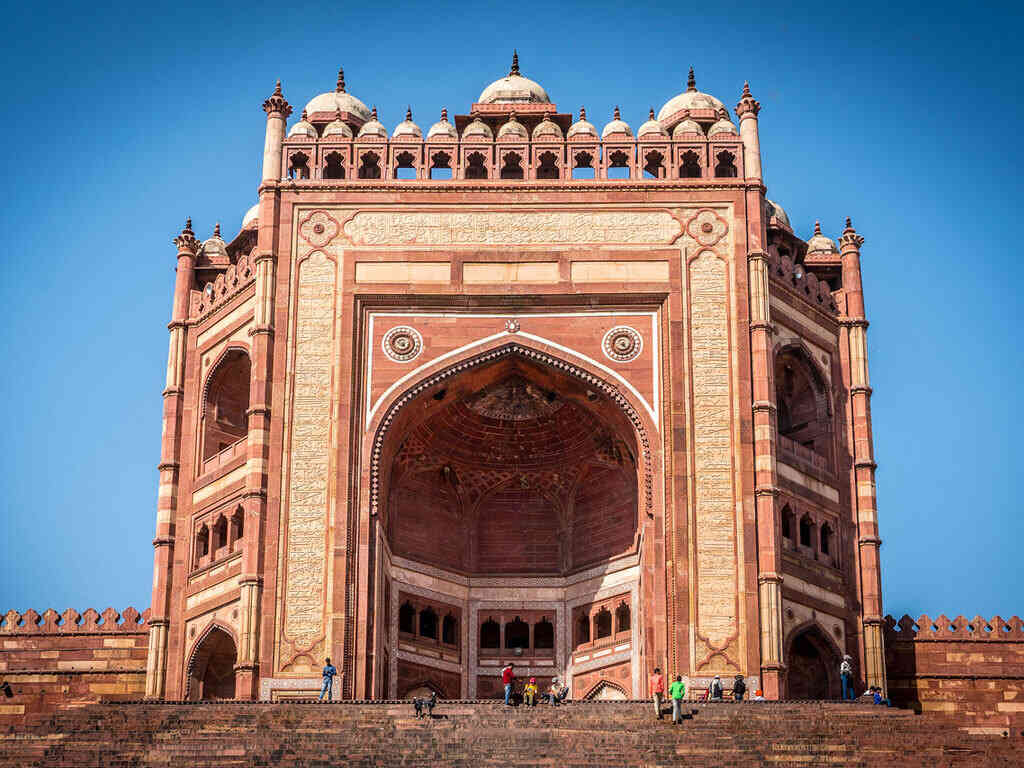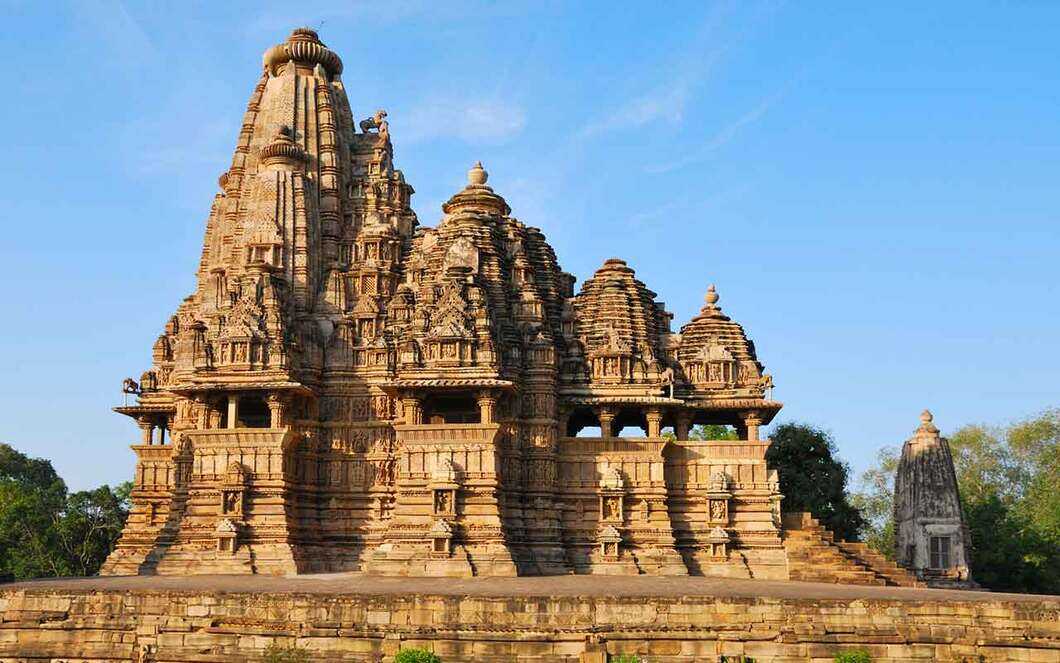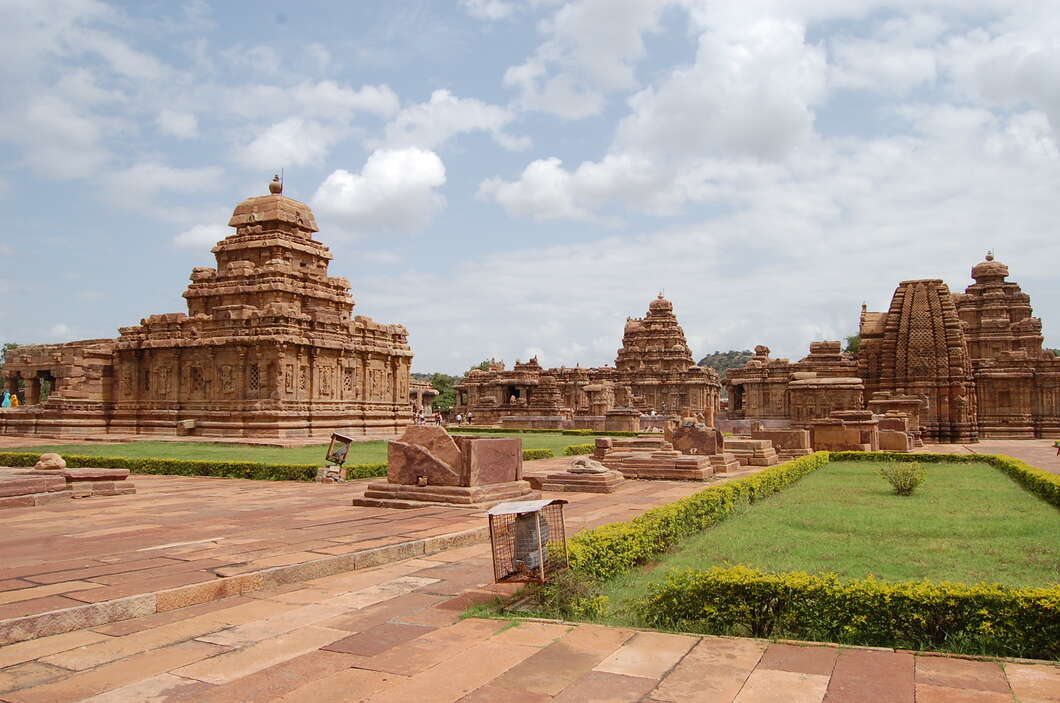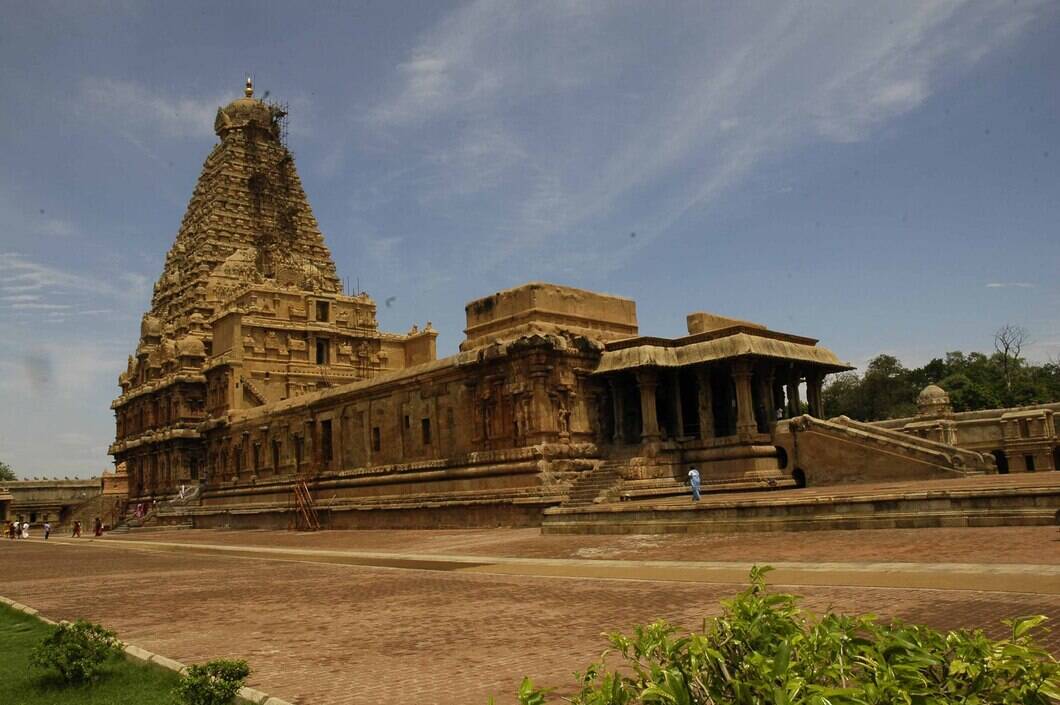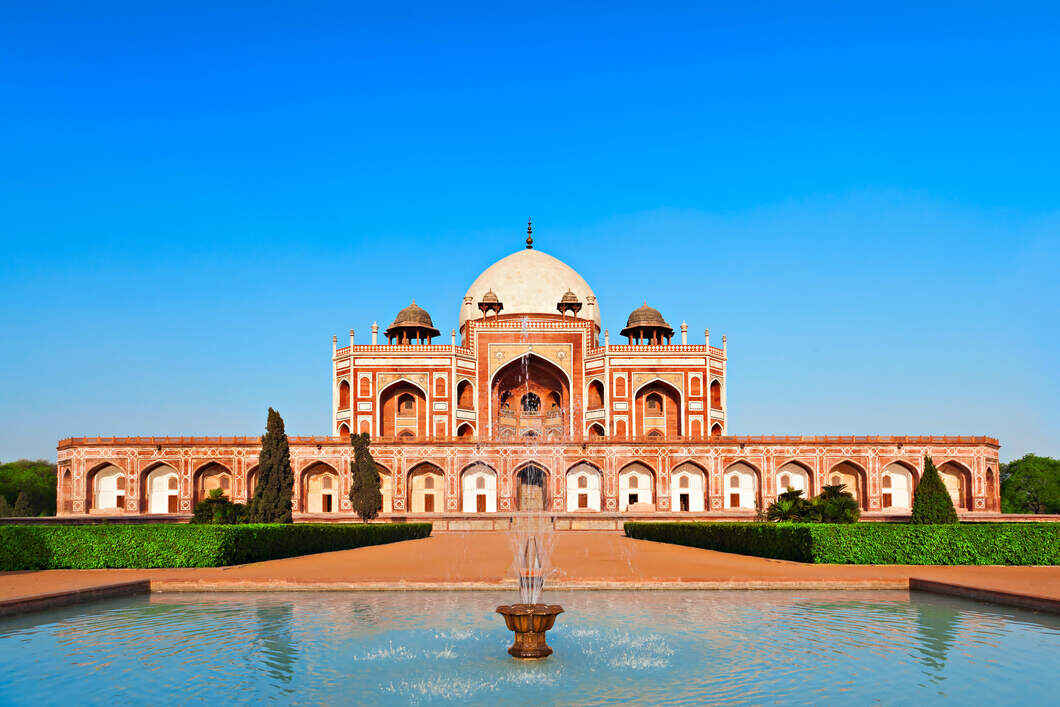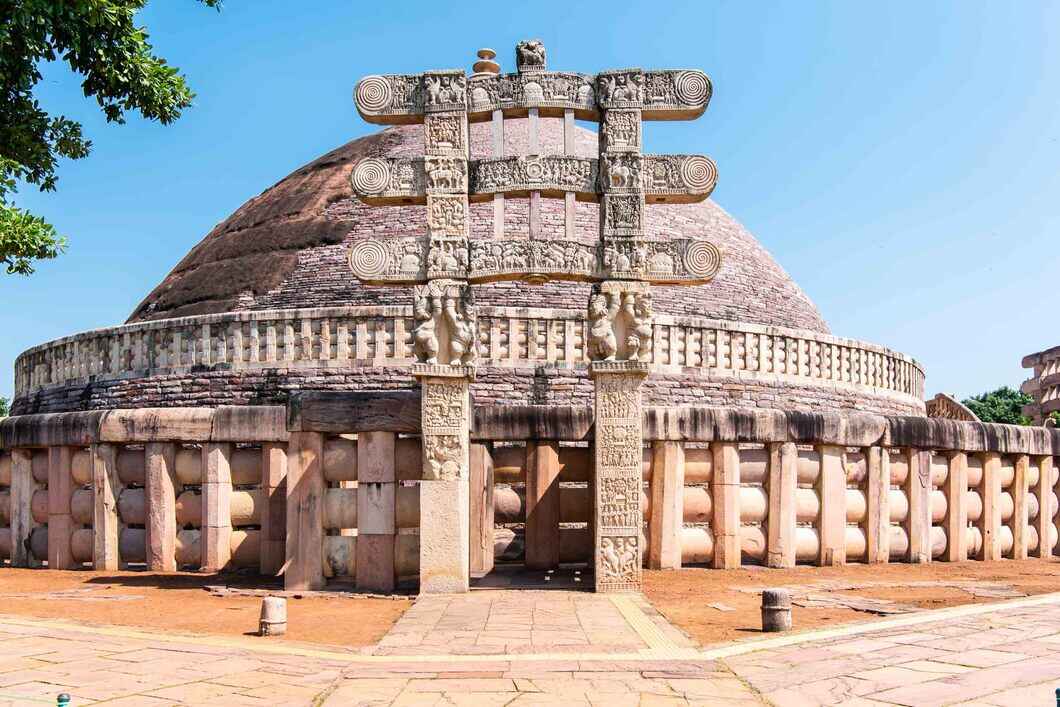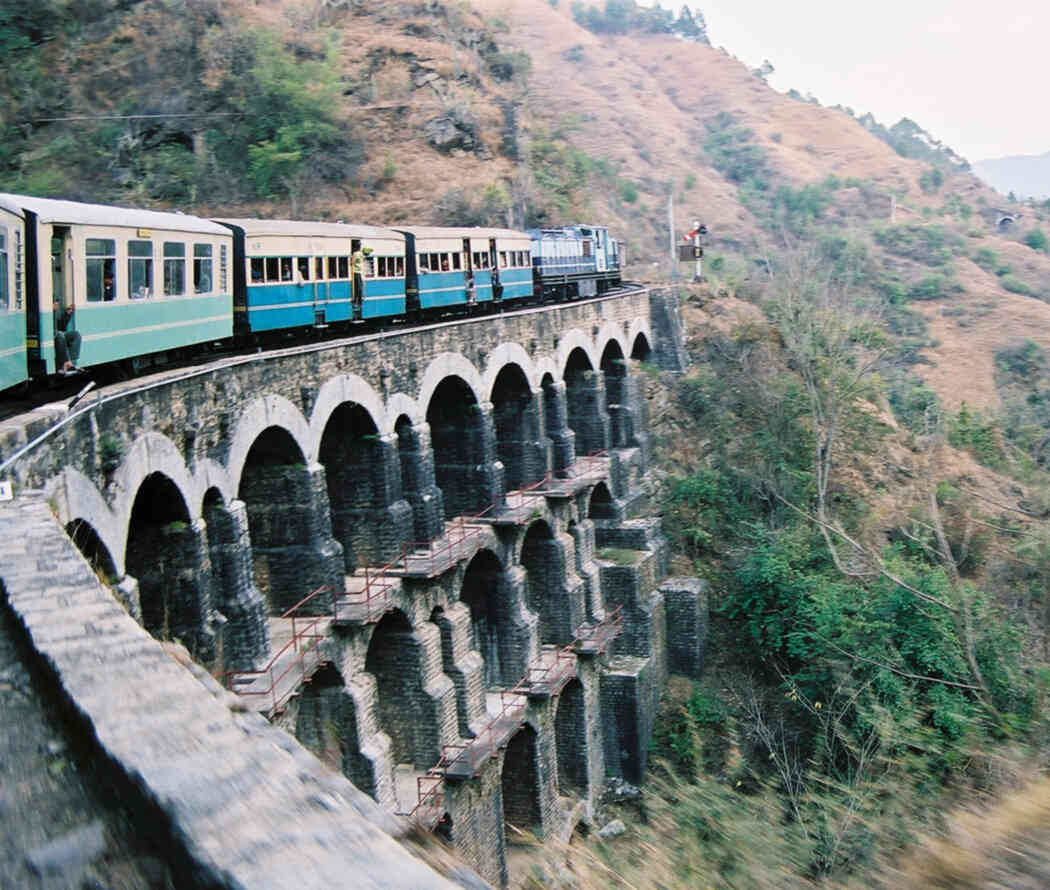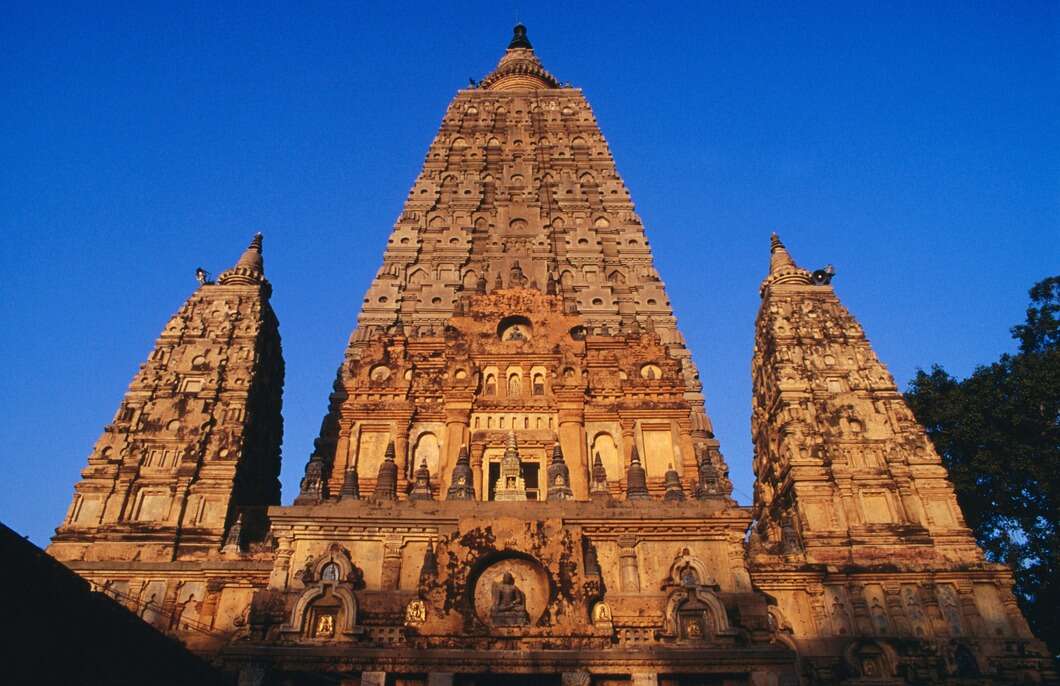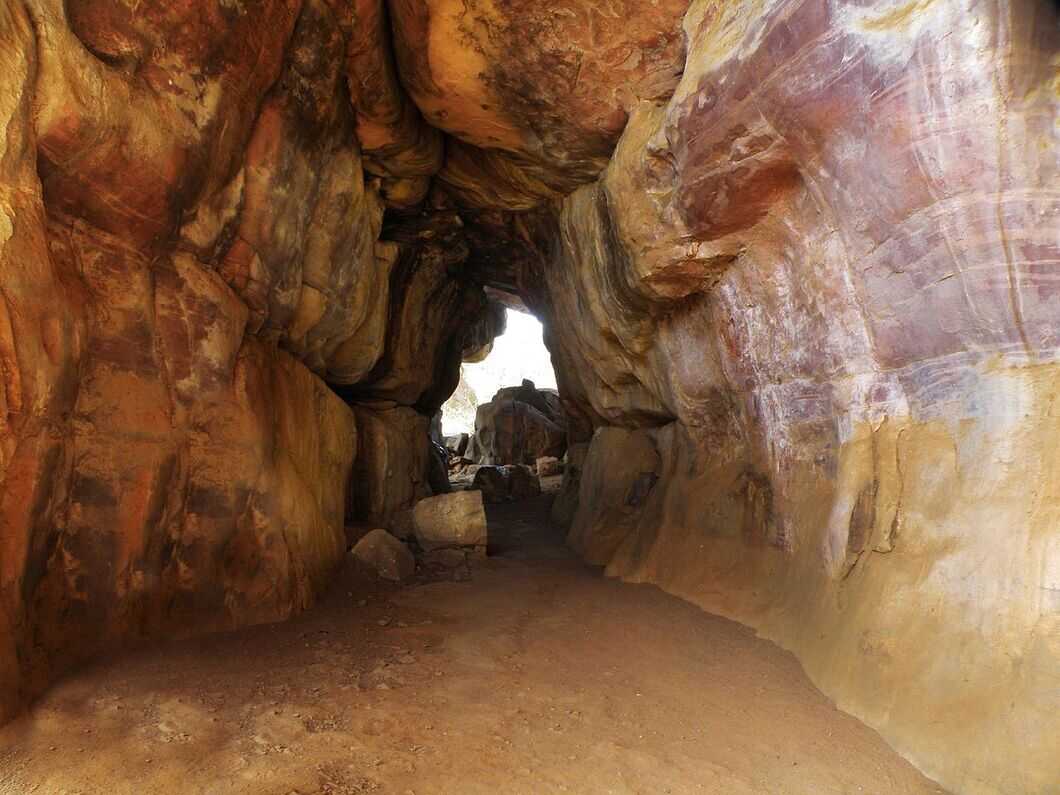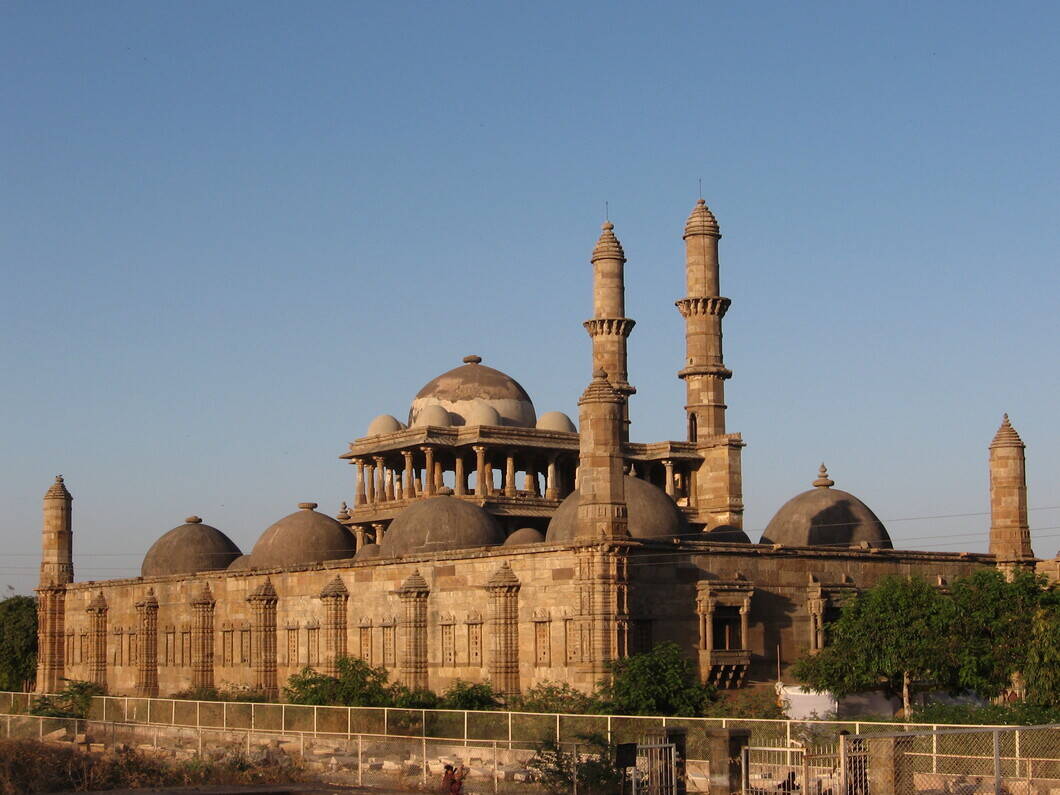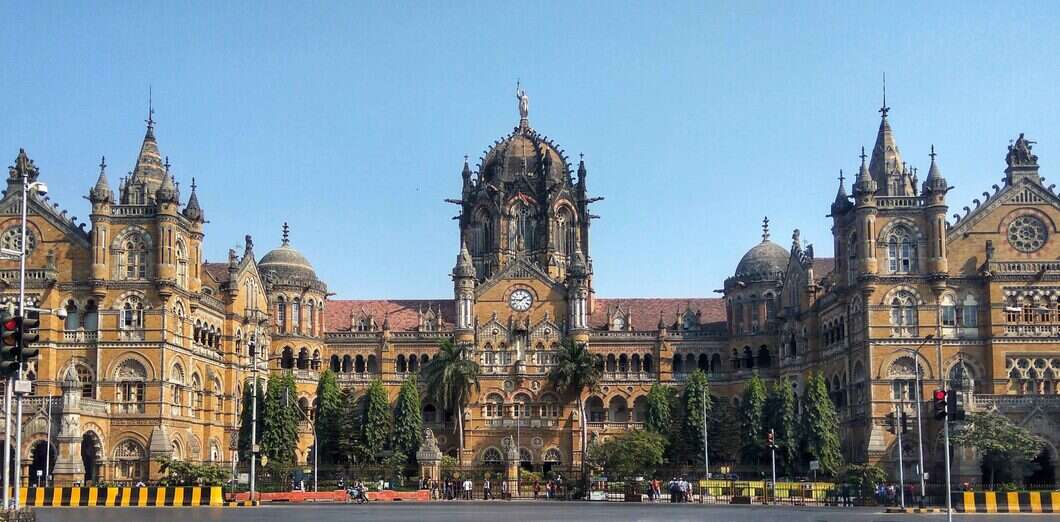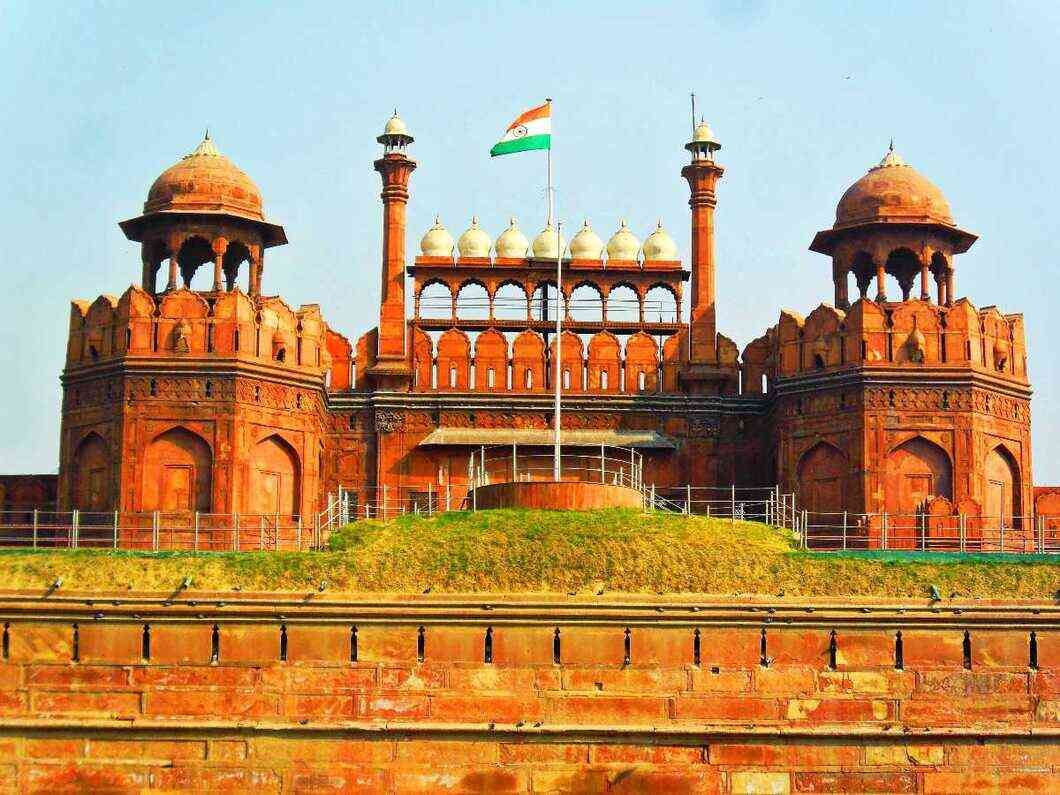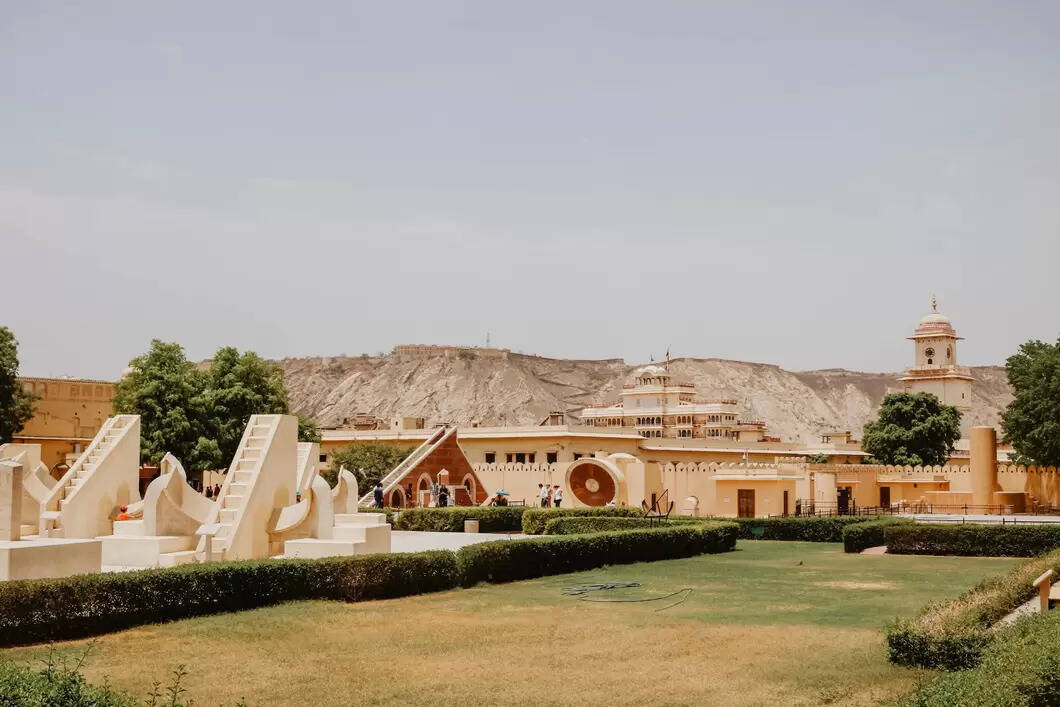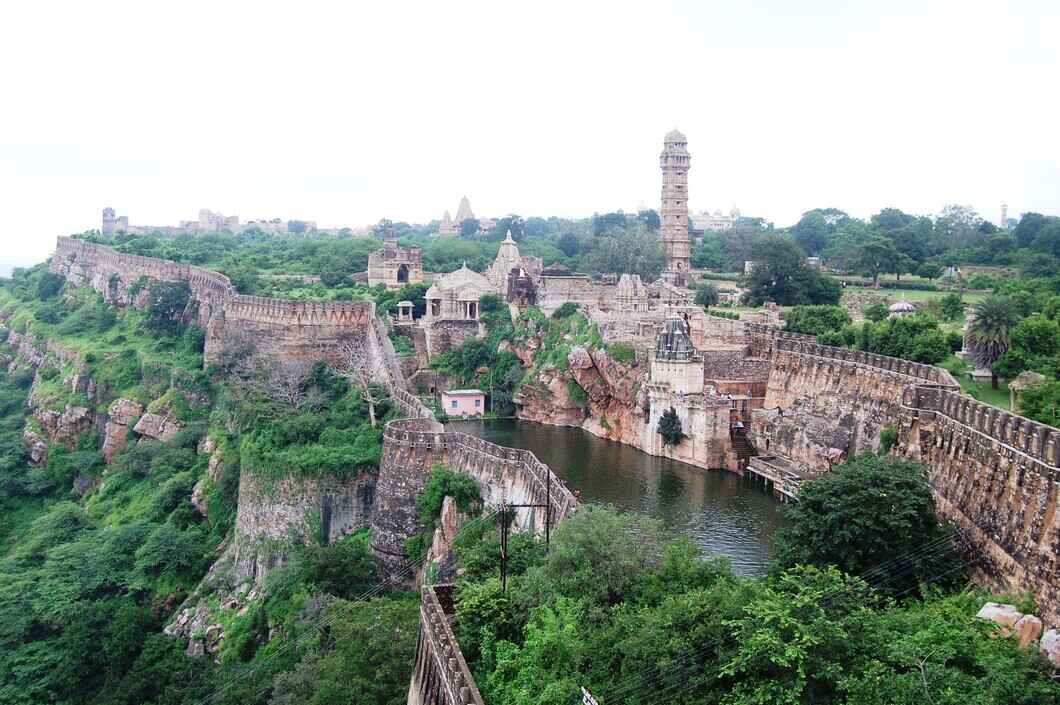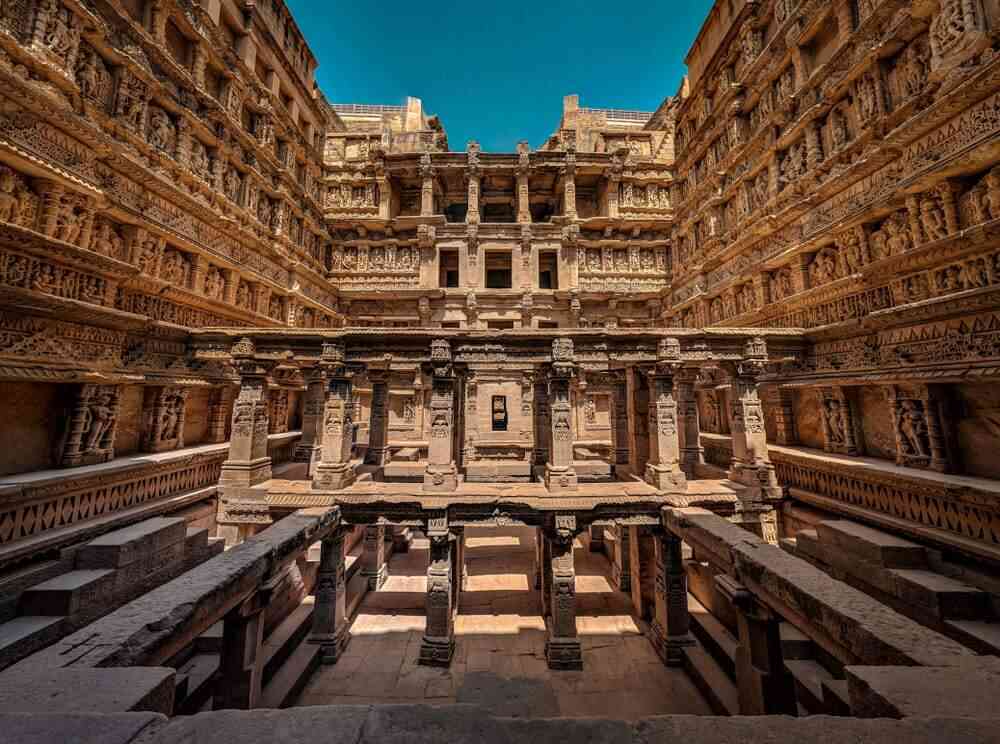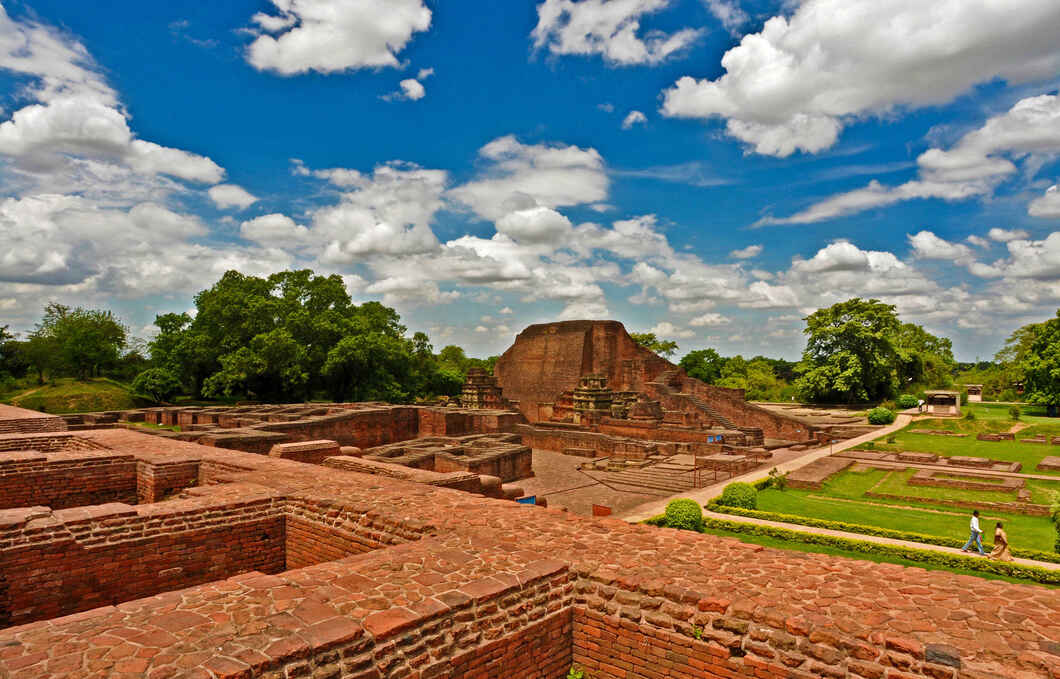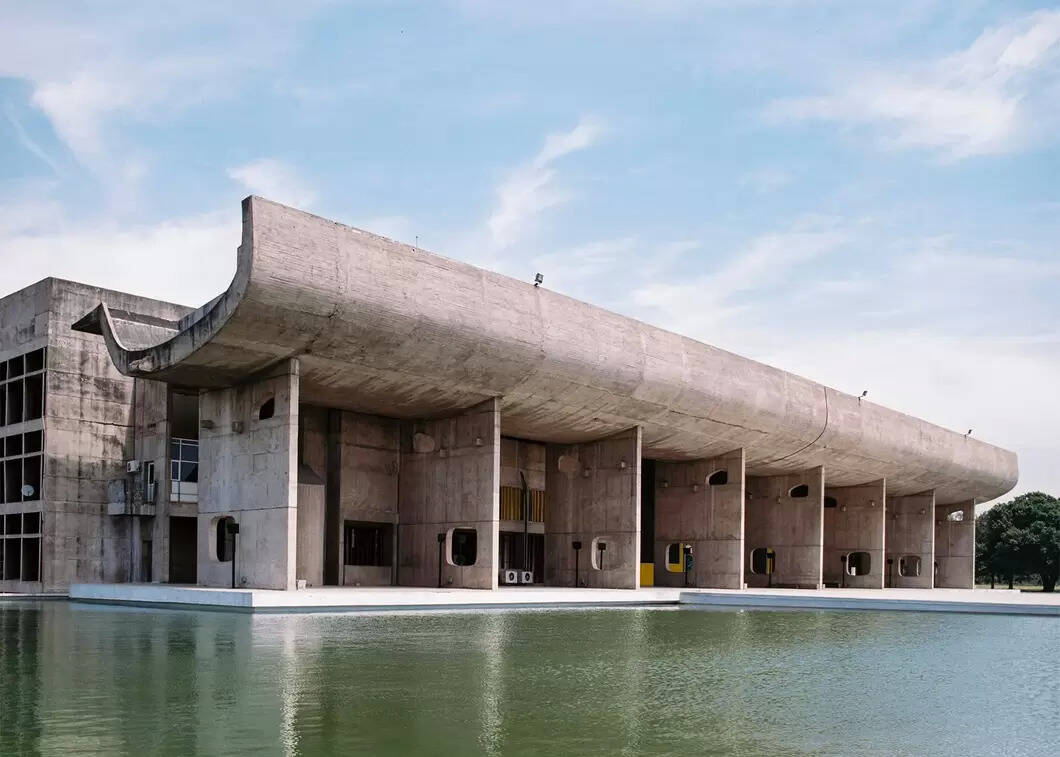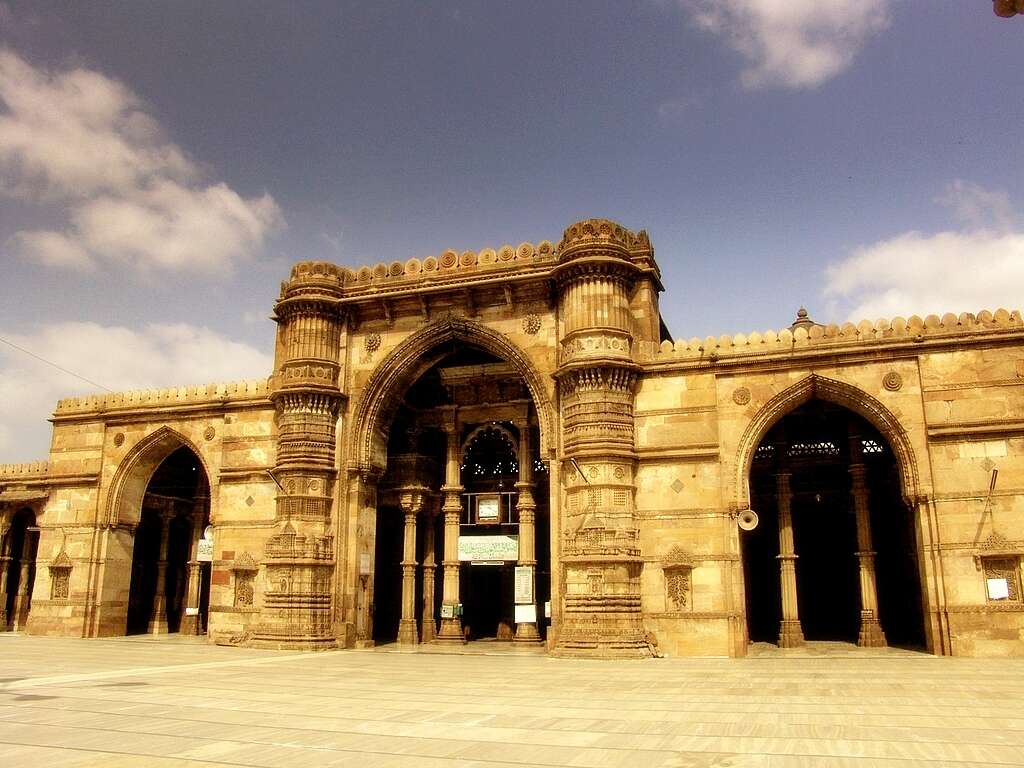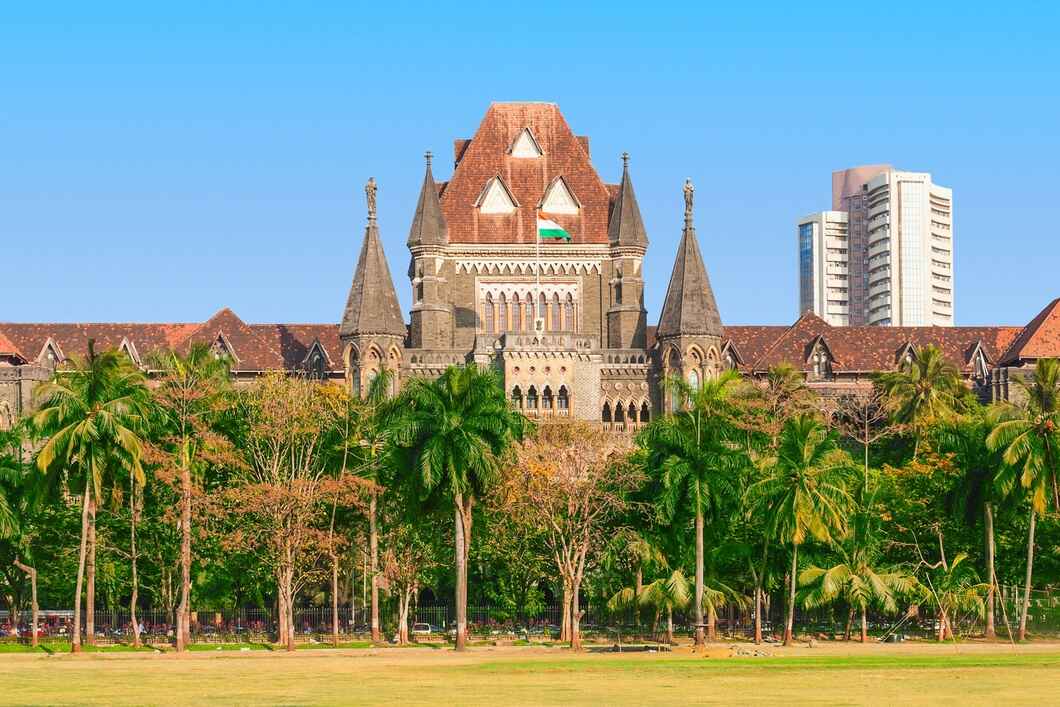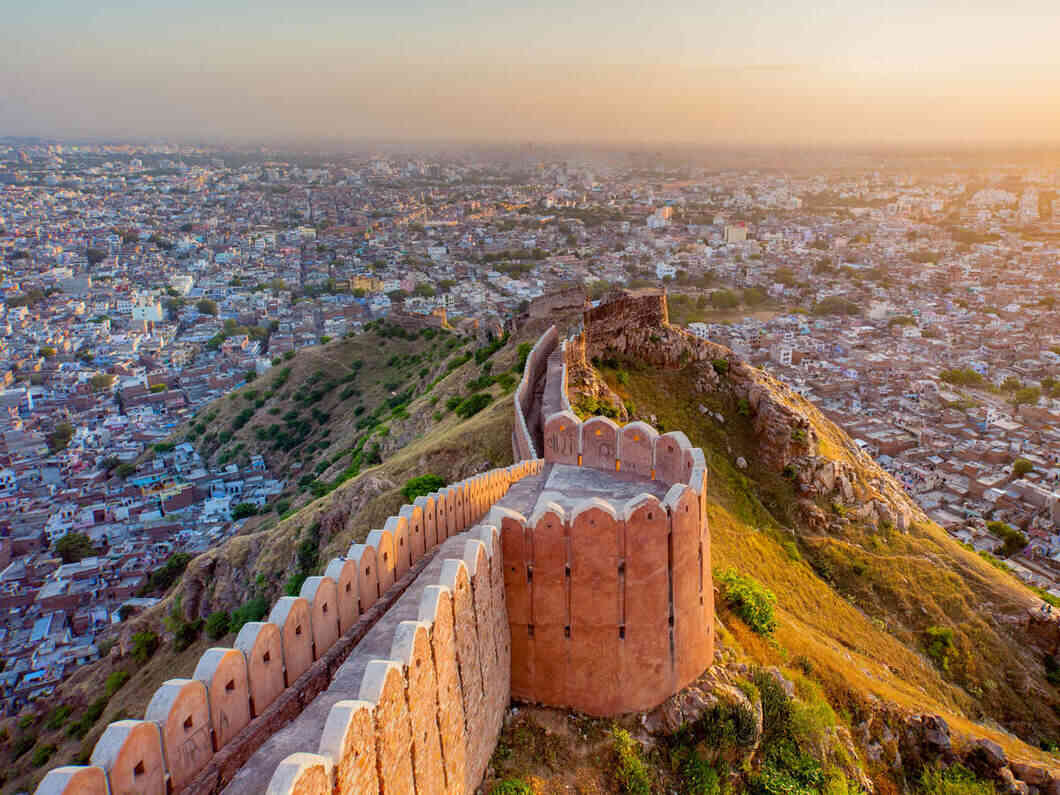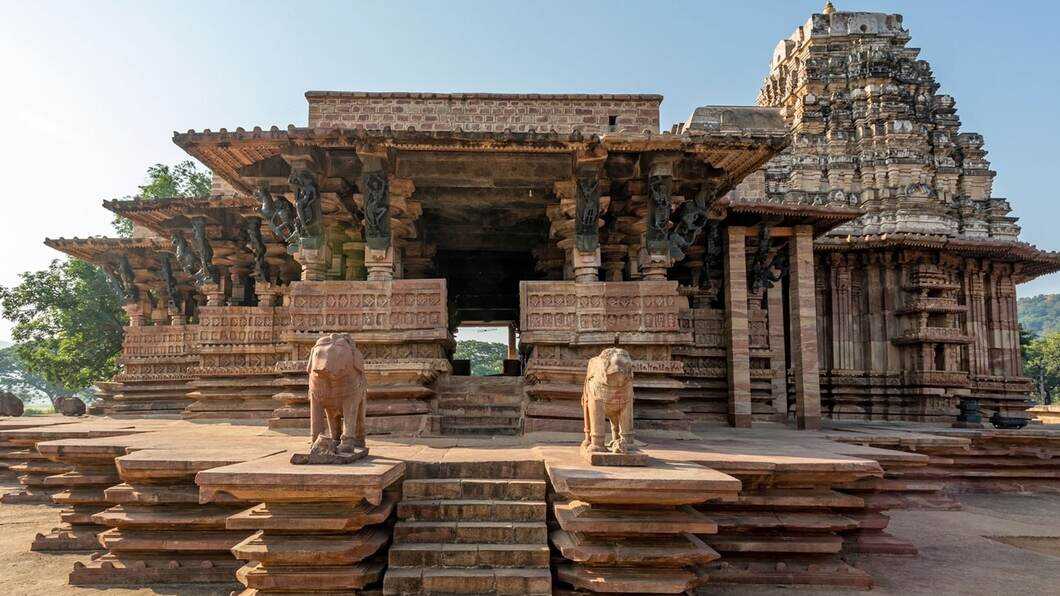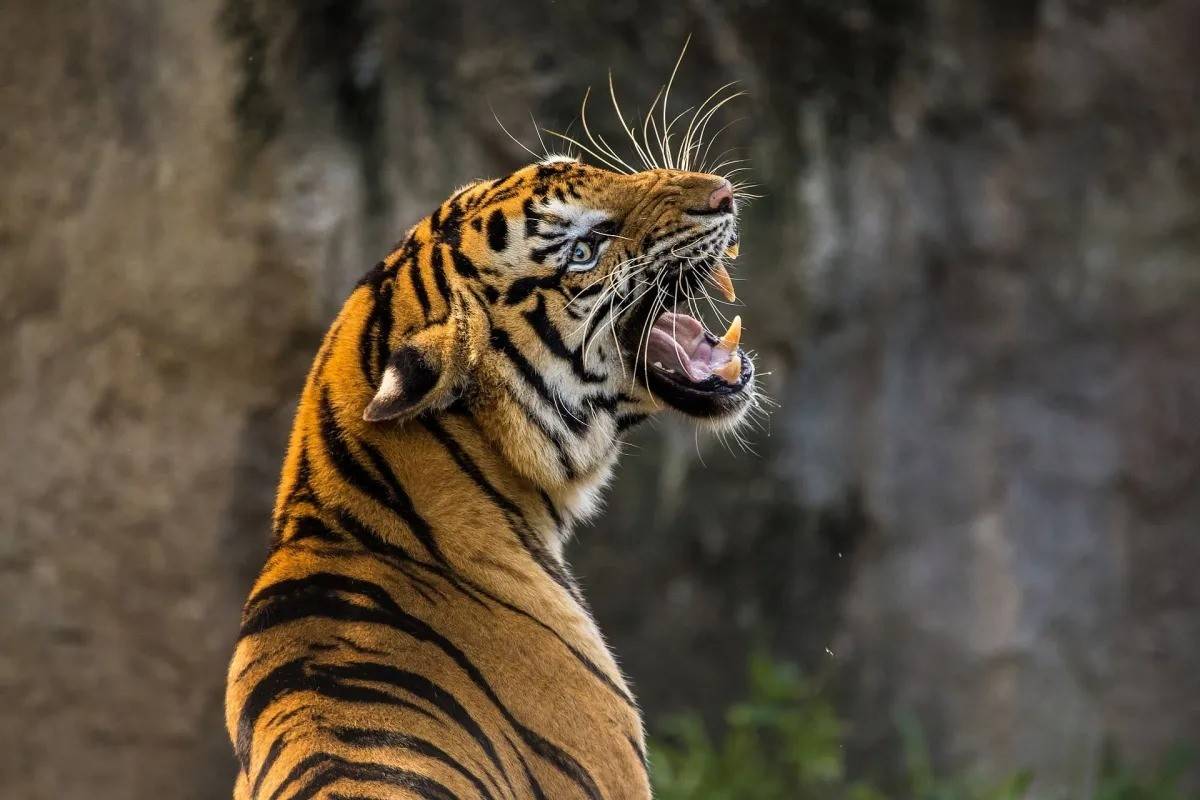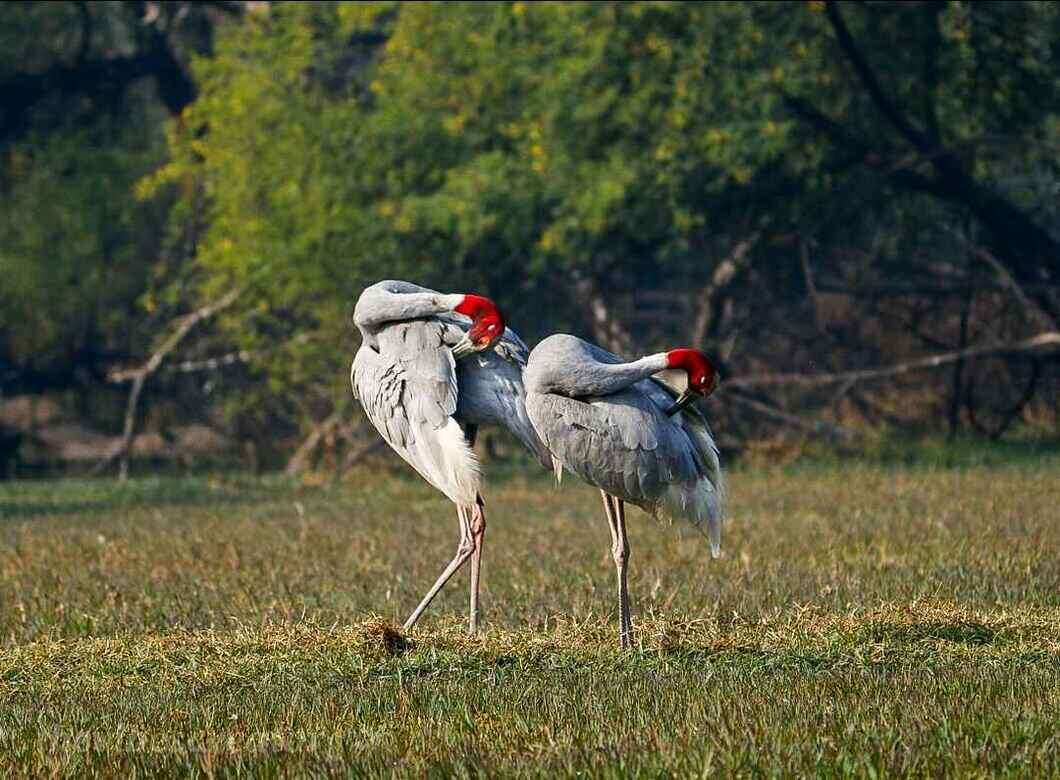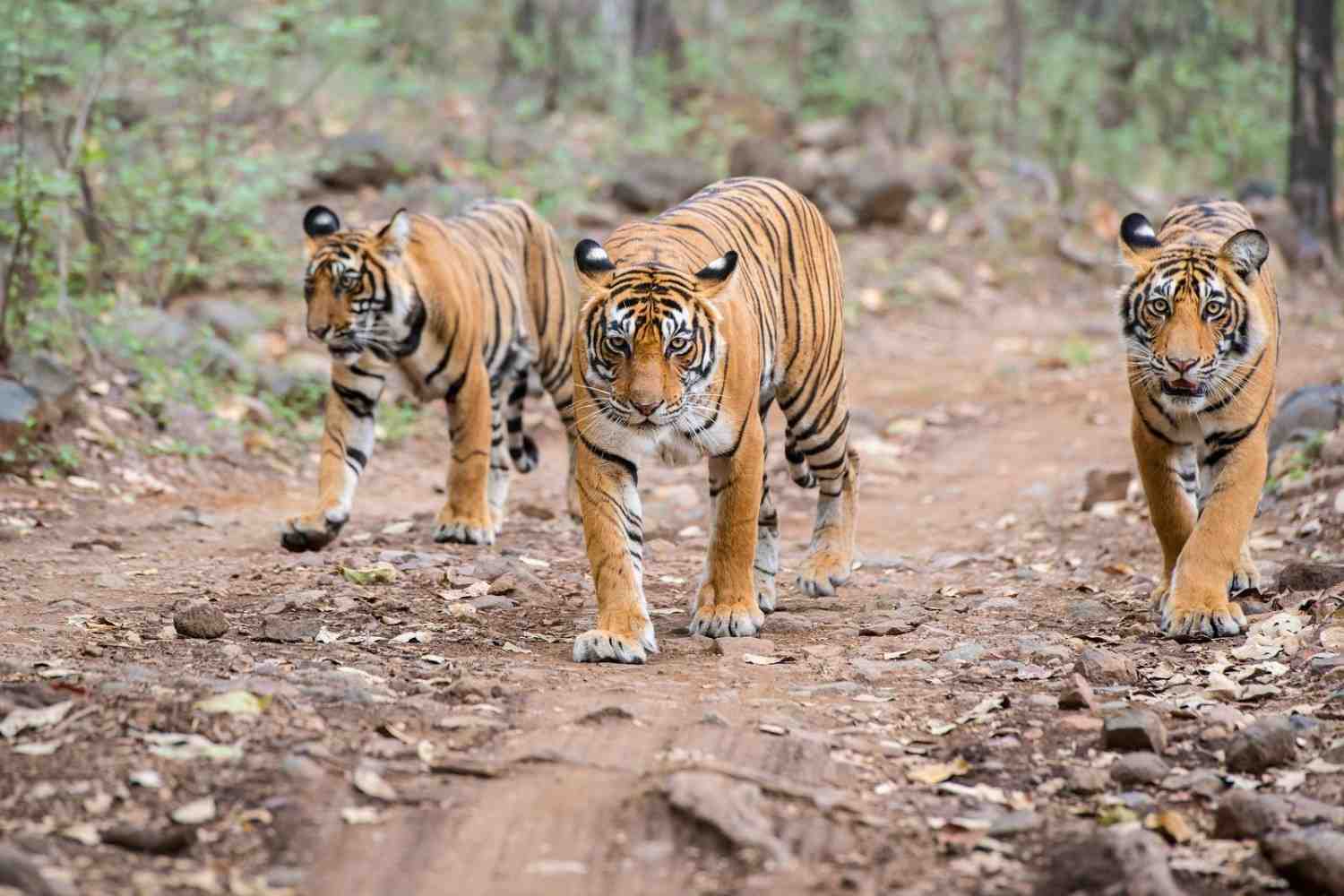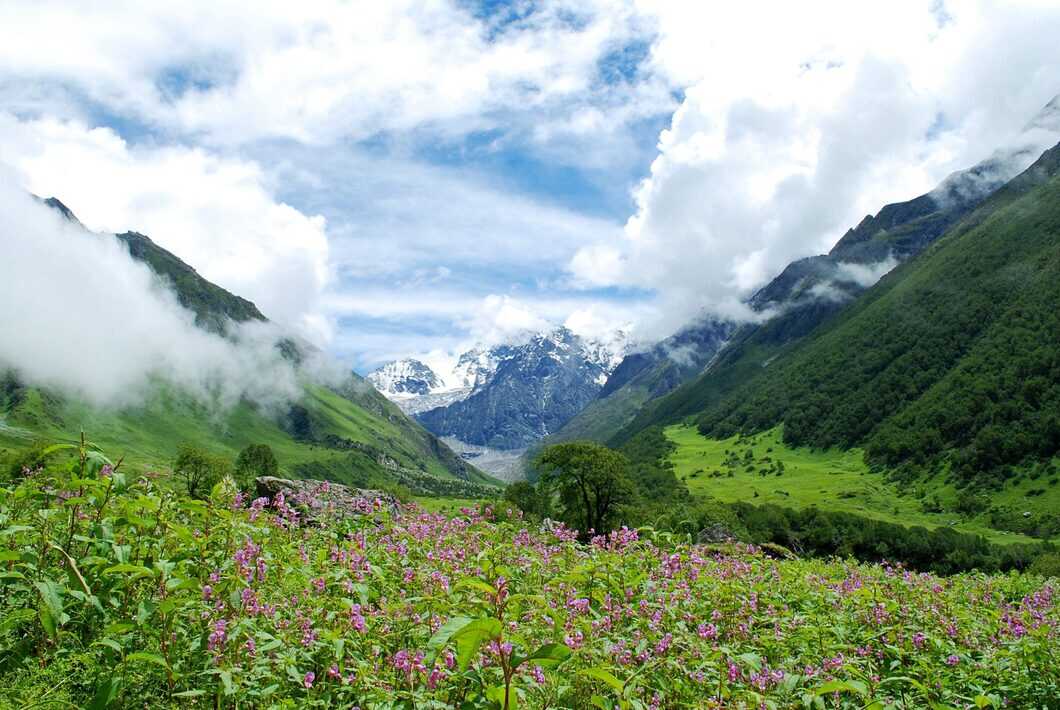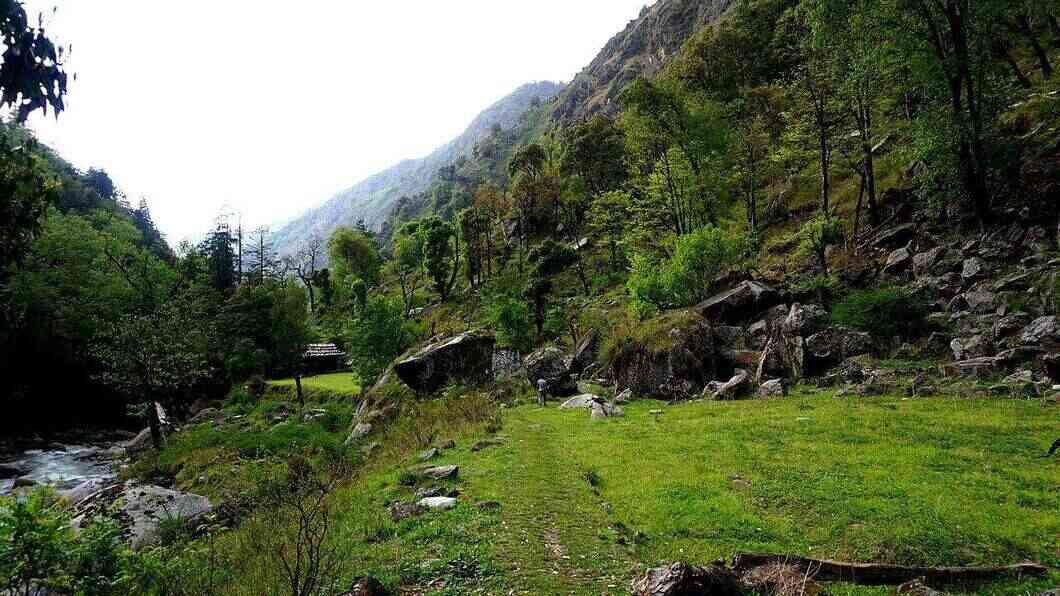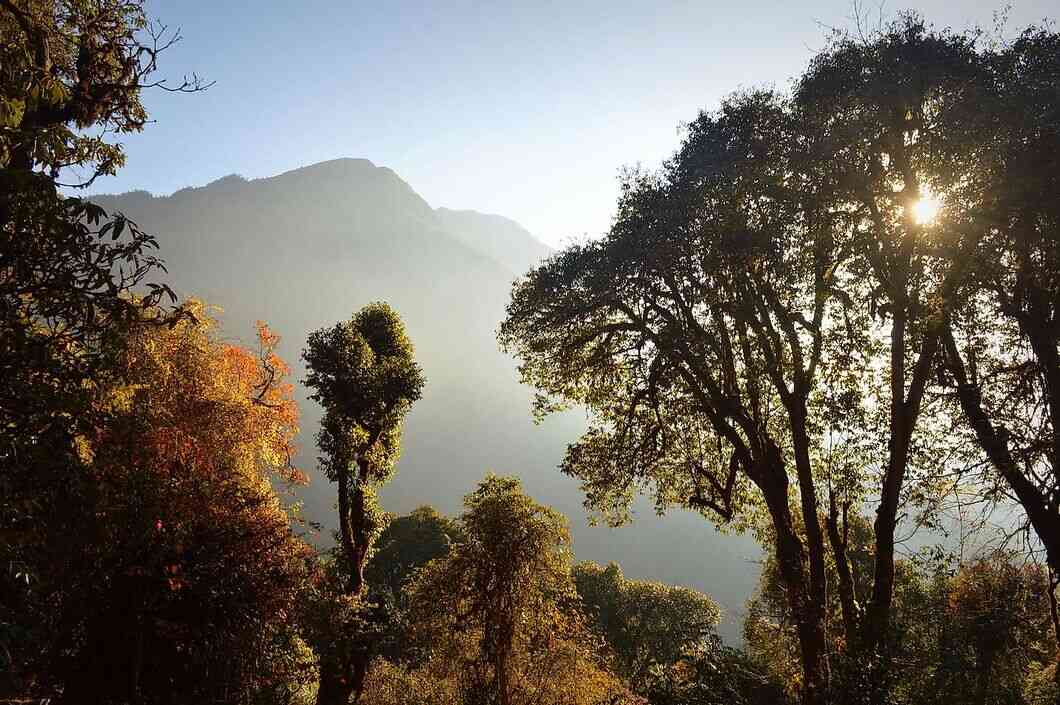Following are all the cultural world heritage sites, sorted according to the year of inclusion:
1. The Taj Mahal (1983)
It is a white marble monument that the Mughal emperor Shahjahan built in memory of his wife Mumtaz Mahal in the 17th century. The impeccable beauty of the Taj Mahal has made it one of the seven marvels of the world.
This mausoleum is a wonderful amalgamation of Mughal, Persian, Indian and Islamic styles of architecture. It has tall minarets, large arch-shaped gates, beautiful gardens, gemstone-clad walls, and many other amazing wonders to behold.
- Location: Dharmapuri, Tajganj, Agra, Uttar Pradesh
- Ideal Time to Explore: October to March
- Hours of Operation: From 6:00 AM to 6:30 PM; remains closed every Friday
- Entry Fee: For Indians ₹ 50/person, for foreigners ₹ 1,100/person and for tourists from BIMSTEC and SAARC countries ₹ 540/person
2. Agra Fort (1983)
Agra Fort, renowned as the Red Fort of Agra, is an architectural masterpiece. The Mughal emperor Akbar built this fort in 1573 beside the right bank of the river Yamuna. This sandstone-made fort was a royal residence until 1638.
The fort complex also has several magnificent structural masterpieces like the Jehangir Mahal, Khas Mahal, Diwan-E-Khas, Diwan-E-Aam, Sheesh Mahal, Nagina Masjid, Moti Masjid, etc.
- Location: Agra Fort, Rakabganj, Agra, Uttar Pradesh
- Ideal Time to Explore: October to March
- Hours of Operation: From 6:00 AM to 6:00 PM; open 7 days a week
- Entry Fee: For Indians ₹ 50/person, for foreigners ₹ 650/person and for tourists from BIMSTEC and SAARC countries ₹ 90/person
3. Ajanta Caves (1983)
The ancient Buddhist Ajanta Caves is also one of the first few places included in the UNESCO World Heritage Sites in India. It is marked by beautifully carved monuments, sculptures, murals and paintings.
There are 31 caves that house several revered chapels and monasteries. You can also view astounding rock-cut designs, statues, and figures in addition to walls with numerous paintings that highlight the past lives and rebirths of Lord Buddha.
- Location: Jalgaon, Aurangabad district, Maharashtra
- Ideal Time to Explore: November to March
- Hours of Operation: From 8:00 AM to 5:00 PM; remains closed on Mondays
- Entry Fee: For Indians ₹ 10/person, for foreigners ₹ 250/person
4. Ellora Caves (1983)
The Ellora Caves contain a series of historical monuments built from 600-700 CE. The complex has more than 100 caves, and out of these, 34 are accessible.
Out of these 34 caves, 17 belong to Hinduism, 12 to Buddhism and the remaining 5 to Jainism. All of these account for the religious tolerance of India. You will find large victory towers, statues of elephants, temples, sculptures, paintings, etc., inside this complex.
- Location: Ellora, Maharashtra
- Ideal Time to Explore: June to March
- Hours of Operation: From 9:00 AM to 5:00 PM; remains closed every Tuesday
- Entry Fee: For Indians ₹ 30/person, for foreigners ₹ 500/person
5. Sun Temple (1984)
The Sun Temple, also renowned as Black Pagoda, is a spectacular Kalinga architecture and a world heritage site in India, located 35 km away from Puri. It is designed as a stone-made chariot of Lord Surya, hauled by seven horses. It has three idols of the Lord Sun, placed in such a way the sun rays in the morning, afternoon and evening fall on them first.
- Location: Konark, Puri, Odisha
- Ideal Time to Explore: October to March
- Hours of Operation: From 6:00 AM to 8:00 PM; 7 days a week
- Entry Fee: For Indians ₹ 40/person, for foreigners ₹ 600/person and for tourists from BIMSTEC and SAARC countries ₹ 40/person
6. Monuments at Mahabalipuram (1984)
Pallava rulers built these monuments beside the Coromandel Coast in the 7-8th centuries. There are almost 40 small to large monuments, including mandapas, rock reliefs, Hindu temples, and chariots. Among the several rock-cut monuments, Descent of Ganges is one of the major attractions. It is an open-air monument illustrating the rich architectural style of India.
- Location: Fisherman Colony, Mahabalipuram, Tamil Nadu
- Ideal Time to Explore: November to March
- Hours of Operation: From 6:00 AM to 6:00 PM, opens 7 days a week
- Entry Fee: For Indians ₹ 40/person, for foreigners ₹ 600/person and for tourists from BIMSTEC and SAARC countries ₹ 40/person
7. Churches and Convents of Goa (1986)
You can find several monuments on this site showcasing the lavish Portuguese Mannerist and Baroque architectural styles. Basilica do Bom Jesus, Church and Convent of Saint Francis, Igreja de Sao Francisco de Assis, Church of Our Lady of the Rosary, and Church of Saint Augustine are some of these grand majestic creations of Portuguese colonies.
- Location: Old Goa
- Ideal Time to Explore: November to February
- Hours of Operation: Remains open all seven days every week
- Entry Fee: No fees
8. Group of Monuments at Hampi (1986)
This UNESCO World Heritage site includes more than 1,600 structures as remnants of the mighty Vijayanagar empire. The shrines, forts, temples, halls, gateways, museums, etc., located at Hampi will compel you to wonder about the grand architectural style of India.
These impressive monuments include Vittala Temple, Virupaksha Temple, Palace of Harihara, Hazara Rama Temple, Queen’s Bath, Hampi Bazaar, Lotus Mahal and the museum.
- Location: Vijayanagar district, Karnataka
- Ideal Time to Explore: October to February
- Hours of Operation: Temples remain open from 6:00 AM to 6:00 PM; however, museums open from 10 AM
- Entry Fee: For Indians ₹ 30/person, for foreigners ₹ 500/person and for tourists from BIMSTEC and SAARC countries ₹ 30/person
9. Fatehpur Sikri (1986)
Constructed by Emperor Akbar, Fatehpur Sikri is one of the most beautiful Indo-Islamic masterpieces and one of the most prominent UNESCO World Heritage Sites in India.
The emperor commissioned to build this architecture as a tribute to Sheikh Salim Chisti, a Sufi saint. Within the long walls of Fatehpur Sikri, you will find other notable structures, including the Panch Mahal, Tomb of Salim Chisti, Jama Mosque, Palace of Jodha Bai and Buland Darwaza.
- Location: Agra, Uttar Pradesh
- Ideal Time to Explore: October to March
- Hours of Operation: From 6:00 AM to 6:00 PM; remains open every day a week
- Entry Fee: For Indians ₹ 40/person, for foreigners ₹ 550/person and for tourists from BIMSTEC and SAARC countries ₹ 20/person
10. Khajuraho Group of Monuments (1986)
Khajuraho group of monuments displays the rich Nagara-style architectural masterpieces of India. It has several ancient Hindu and Jain temples built during the reign of the Chandela dynasty.
At present, you can explore only 20 out of 85 temples, and the rest have become dilapidated with time. These temples and monuments are also marked by erotic sculptures and figurines carved on the wall.
- Location: Chhatarpur, Madhya Pradesh
- Ideal Time to Explore: October to March
- Hours of Operation: From 8:00 AM to 6:00 PM, stays open every day a week
- Entry Fee: For Indians ₹ 40/person, for foreigners ₹ 600/person and for tourists from BIMSTEC and SAARC countries ₹ 40/person. You will have to pay extra to explore museums and watch shows.
11. Group of Monuments at Pattadakal (1987)
In Pattadakal, you can see nine beautifully designed Hindu temples, including Mallikarjuna Temple, Virupaksha Temple, Sangameshwara Temple, Galaganatha Temple, Kashi Vishwanatha Temple, Papanatha Temple, etc.
The site also has the Jain Narayan Temple. Built during the Chalukyan rule in around 7-8th centuries, these monuments flaunt a fine blend of Dravida, Prasada, Vimana, Nagara, and Rekha styles.
- Location: Bagalkot district, Karnataka
- Ideal Time to Explore: October to March
- Hours of Operation: From 6:00 AM to 6:00 PM; remains open every day a week
- Entry Fee: For Indians ₹ 35/person, for foreigners ₹ 550/person and for tourists from BIMSTEC and SAARC countries ₹ 35/person
12. Elephanta Caves (1987)
The ancient Elephanta Caves, also called Gharapurichi Leni, contain two series of caves. Among these, five caves have rock-cut Hindu idols and sculptures, while two flaunt Buddhist architecture built in the 5-8th centuries. These structures represent the glorious history of religious tolerance in India.
- Location: Gharapuri, Maharashtra
- Ideal Time to Explore: November to March
- Hours of Operation: From 9:00 AM to 5:00 PM, remains closed every Monday
- Entry Fee: For Indians ₹ 40/person, for foreigners ₹ 600/person and for tourists from BIMSTEC and SAARC countries ₹ 40/person
13. Great Living Chola Temples (1987, 2004)
It is a collection of three temples dedicated to Lord Shiva spread across different parts of Southern India. These are Airavatesvara Temple in Darasuram, Brihadisvara Temple in Gangaikonda Cholapuram, and Brihadisvara Temple in Thanjavur.
These temples were included in the list of UNESCO World Heritage Sites in India in 1987 to showcase the brilliant architectural and artistic achievements of India during the Chola reign.
- Location: The locations of the three temples are as follows:
- Airavatesvara Temple: Darasuram, Kumbakonam, Tamil Nadu
- Brihadisvara Temple of Gangaikonda Cholapuram: Jayankondam, Tamil Nadu
- Brihadisvara Temple of Thanjavur: Balaganapathy Nagar, Tamil Nadu
- Ideal Time to Explore: November to March
- Hours of Operation: 8:30 AM to 9:00 PM; opens every day
- Entry Fee: Free
14. Qutb Minar and its Monuments (1993)
The Qutub Minar and its monuments are exemplary Islamic architecture built in the 13th century. It is a red sandstone tower, boasting a height of 72.5 meters. Besides this tall tower, the entire complex has other magnificent historical structures, including Alai-Darwaza, Quwwat ul-Islam Mosque, Alai Minar, Iron Pillar, funerary buildings, etc.
- Location: Mehrauli, New Delhi
- Ideal Time to Explore: October to March
- Hours of Operation: From 7:00 AM to 5:00 PM; opens every day
- Entry Fee: For Indians ₹ 30/person, for foreigners ₹ 500/person and for tourists from BIMSTEC and SAARC countries ₹ 30/person
15. Humayun's Tomb(1993)
The Mughal emperor Humayun’s widowed wife, Biga Begum, built the iconic Persian-styled tomb in memory of her beloved husband. This UNESCO heritage site in India is one of the most well-preserved Mughal mausoleums.
Furthermore, the tomb complex has four mesmerising Persian-styled gardens within the estate. The complex also houses graves of other royal descendants, including empress Biga Begum, Dara Shikoh, Hamida Begum and others.
- Location: Mathura Road, New Delhi
- Ideal Time to Explore: October to March
- Hours of Operation: From 6:00 AM to 6:00 PM; opens every day
- Entry Fee: For Indians ₹ 30/person, for foreigners ₹ 500/person and for tourists from BIMSTEC and SAARC countries ₹ 30/person
16. Buddhist Monuments at Sanchi (1989)
The Buddhist Monuments of Sanchi is one of the oldest stone-made architectures, constructed in 200-100 BC. In fact, this site’s focal point, the Great Sanchi Stupa, is a structure from the 3rd century BC. It has a large dome with a diameter of 36 metres and a height of 16 metres.
Besides this, you can find several rock-carved palaces, monasteries, temples, and monolithic pillars within this complex. It has been listed as one of the UNESCO heritage sites in India due to its high religious importance.
- Location: Sanchi Town, Raisen, Madhya Pradesh
- Ideal Time to Explore: November to March
- Hours of Operation: From 6:30 AM to 6:30 PM; opens 7 days a week
- Entry Fee: For Indians ₹ 40/person, for foreigners ₹ 600/person and for tourists from BIMSTEC and SAARC countries ₹ 40/person
17. Mountain Railways of India (1999, 2005, 2008)
Mountain railways are brilliant engineering solutions that ease connectivity problems in hilly and rugged regions of India. For this, Darjeeling Railways became the first mountain railway to be recognised as one of the UNESCO World Heritage Sites in India in 1999.
Later, UNESCO also recognised Nilgiri and Kalka-Shimla Railways in the list of heritage mountain railways in 2005 and 2008, respectively.
- Location: It is available in Darjeeling, Niligiri and Kalka-Shimla Railways
- Ideal Time to Explore:
- Hours of Operation: Stations stay open all the time
- Entry Fee: To take a train ride, you need to pay the booking price of tickets, and the price depends on the distance of your journey.
18. Mahabodhi Temple Complex (2002)
Emperor Ashoka built this Buddhist temple complex at Bodh Gaya, where Lord Buddha attained enlightenment. It is one of the consecrated temples for Buddhists. The temple complex has several religious structures in its 5-hectare area, including a 50-metre tall Vajrasana, venerated Bodhi tree, a lotus pond, and several stupas.
- Location: Bodh Gaya, Bihar
- Ideal Time to Explore: April to May and November to February
- Hours of Operation: From 5:00 AM to 9:00 PM; stays open every day of the week
- Entry Fee: Free
19. Rock Shelters of Bhimbetka (2003)
The Rock Shelters of Bhimbetka is a UNESCO World Heritage Site in India, carrying immense cultural and historical importance. This site has five natural rock shelters from the Mesolithic era. On the walls of these shelters, you can find artwork and carvings from the Asian Stone Age, painting a rough picture of people's lifestyles and activities during that period.
- Location: Raisen District, Madhya Pradesh
- Ideal Time to Explore: October to April
- Hours of Operation: From 7:00 AM to 6:00 PM; opens every day a week
- Entry Fee: For Indians ₹ 25/person, for foreigners ₹ 500/person
20. Champaner-Pavagadh Archaeological Park (2004)
This UNESCO site in India contains a series of forts and other architecture dispersed within the long area, starting from Pavagadh hill to Champaner city.
Besides forts, the site has architectural masterpieces like fortresses, step-wells, palaces, temples, tombs, mosques, residential complexes, and agricultural areas. Further, the Kalika Mata temple atop Pavagadh hill is one of the holy shrines in the country.
- Location: Panchmahal district, Gujarat
- Ideal Time to Explore: October to February
- Hours of Operation: From 6:00 AM to 6:00 PM; opens every day
- Entry Fee: For Indians ₹ 35/person, for foreigners ₹ 550/person and for tourists from BIMSTEC and SAARC countries ₹ 35/person
21. Chhatrapati Shivaji Terminus (2004)
Chhatrapati Shivaji Terminus is a historical and busy railway station included in the list of UNESCO World Heritage Sites in India for its impeccable architectural beauty. It is one of the splendid Victorian gothic architectures designed by British architect Frederick William.
Built with sandstones and limestones, it flaunts an attractive facade. The inside is also built with fine Italian marble, multiplying its beauty manifold.
- Location: Fort, Mumbai, Maharashtra
- Ideal Time to Explore: October to March
- Hours of Operation: Opens 24x7
- Entry Fee: Free
22. Red Fort Complex (2007)
The Red Fort or Lal Qila, built by emperor Shahjahan, served as the major residential place for the Mughal royal family. It is a majestic red sandstone fort palace showcasing a perfect blend of Indian, Persian and Timurid styles of architecture. You can also see other historical structures like Diwan-i-Khas, Diwan-i-Aam, Lahori Gate, Delhi Gate, etc., within this complex.
- Location: Netaji Subhash Marg, Chandni Chowk, New Delhi
- Ideal Time to Explore: October to March
- Hours of Operation: From 9:30 AM to 4:30 PM
- Entry Fee: For Indians ₹ 35/person, for foreigners ₹ 500/personand for tourists from BIMSTEC and SAARC countries ₹ 35/person
23. The Jantar Mantar (2010)
Jantar Mantar is one of the world’s largest astronomical observatories boasting smart instruments and constructions.
This observatory built by Sawai Jai Singh II is made in such a way that you can explore the celestial bodies with bare eyes. Besides 19 large astronomical equipments, it has the biggest sundial in the world. It got its position among the UNESCO World Heritage Sites in India owing to this scientific and cultural importance.
- Location: Gangori Bazaar, Jaipur, Rajasthan
- Ideal Time to Explore: September to March
- Hours of Operation: From 9 AM to 4:30 PM; opens every day.
- Entry Fee: For Indians ₹ 50/person, for foreigners ₹ 200/person and for tourists from BIMSTEC and SAARC countries ₹ 50/person
24. Hill Forts of Rajasthan (2013)
In 2013, UNESCO recognised six majestic hill forts in the Aravalli Mountains as World Heritage Sites. These include Amer Fort, Chittorgarh Fort, Gagron Fort, Ranthambore Fort, Jaisalmer Fort and Kumbhalgarh Fort. Various Rajput rulers built these fortifications during the 5-18thcentury to enhance their safety and demonstrate their power.
- Location: Following are the location of these six hill forts
- Amer Fort: Devisinghpura, Amer, Jaipur
- Chittorgarh Fort: Chittorgarh, Rajasthan
- Gagron Fort: Jhalawar, Rajasthan
- Ranthambore Fort: Sawai Madhopur, Rajasthan
- Jaisalmer Fort: Gopa Chok, Fort Kothri Para Road, Jaisalmer, Rajasthan
- Kumbhalgarh Fort: Rajsamand District, Kumbhalgarh, Rajasthan
- Ideal Time to Explore: October to March
- Hours of Operation: Here are the opening/closing times of these six hill forts
- Amer Fort: From 8 AM to 7 PM
- Chittorgarh Fort: From 9:00 AM to 6:00 PM
- Gagron Fort: From 9:00 AM to 6:00 PM
- Ranthambore Fort: From 6:00 AM to 6:00 PM
- Jaisalmer Fort: From 6:00 AM to 5:00 PM
- Kumbhalgarh Fort: From 9:00 AM to 6:00 PM
- Entry Fee: Following are the entry fees for these six hill forts
- Amer Fort: For Indians ₹ 50/person and for foreigners ₹ 500/person
- Chittorgarh Fort: For Indians ₹ 10/person and for foreigners ₹ 100/person
- Gagron Fort: Free
- Ranthambore Fort: For adults ₹ 15/person and for children ₹ 10/person
- Jaisalmer Fort: For Indians ₹ 50/person and for foreigners ₹ 250/person
- Kumbhalgarh Fort: For Indians ₹ 10/person and for foreigners ₹ 100/person
25. Rani-ki-Vav (2014)
Queen's Stepwell, or Rani Ki Vav, is a mesmerising underground architecture built on the bank of the Saraswati river. It served as a water storage system. It is a large structure with a length, breadth and depth of 64 metres, 20 metres and 27 metres, respectively.
This inverted-temple-like step-well has decorated walls with sculptures of deities, including Lord Vishnu, apsaras and yoginis.
- Location: Patan, Gujarat
- Ideal Time to Explore: October to March
- Hours of Operation: From 6:00 AM to 6:00 PM; opens every day
- Entry Fee: For Indians ₹ 35/person, for foreigners ₹ 550/person and for tourists from BIMSTEC and SAARC countries ₹ 35/person
26. Nalanda Mahavihara (2016)
Nalanda Mahavihara was a world-class university that used to attract scholars from China, Korea, Tibet, Central Asia, etc. From the archaeological remnants of Nalanda Mahavira, it has been found that it conducted educational activities for more than 800 years, starting from the 3rd century BC.
Presently, you can see the ruins of viharas, stupas, shrines, etc. that used to adorn this ancient centre of learning.
- Location: Nalanda district, Bihar
- Ideal Time to Explore: October to March
- Hours of Operation: From 9:00 AM to 5:00 PM; remains closed every Friday
- Entry Fee: For Indians ₹ 15/person, for foreigners ₹ 200/person and for tourists from BIMSTEC and SAARC countries ₹ 15/person
27. Capitol Complex (The Architectural Work of Le Corbusier) (2016)
Le Corbusier, a master architect, has built several majestic modern building complexes throughout the world. UNESCO collectively included all of these in its list of world heritage sites.
Built over 100 acres of land, the Capitol complex is one such landmark architectural creation in India. This total complex has 3 large buildings, a martyrs memorial, an open-hand monument, a geometric hill, a tower of shadows and a rock garden.
- Location: Sector 1, Chandigarh
- Ideal Time to Explore: October to March
- Hours of Operation: From 9 AM to 5 PM; opens every day
- Entry Fee: Free
28. Historic City of Ahmedabad (2017)
The capital of Gujarat, Ahmedabad, is the first Indian city included in the list of UNESCO World Heritage Sites in India. Its sultanate architecture, mosques, Hindu/Jain temples, gates and walls make it a culturally endowed city. The mosques and temples from different religions also exhibit a history of religious co-existence in this city.
- Location: Ahmedabad, Gujarat
- Ideal Time to Explore: November to February
29. Gothic-Victorian and Art-Deco Ensembles of Mumbai (2018)
These ensembles comprise several Art-Deco and public buildings designed in neo-gothic style. All these architectures are located around Oval Maidan, in the Fort Area of Mumbai.
On the east side of this ground, you will find gothic architecture, including the Bombay High Court, the University of Mumbai, Elphinstone College, and David Sassoon Library. On the opposite side, there are Art-Deco architectures, including various residential buildings.
- Location: Mumbai, Maharashtra
- Ideal Time to Explore: November to March
30. Jaipur City (2019)
Jaipur, or the pink city, came into the list of UNESCO World Heritage Sites in India owing to its cultural significance and royal heritage. The essence of this city is primarily dotted by its majestic architecture that include remarkable Havelis, royal places and forts like Amber Fort, City Palace, Jantar Mantar, etc.
- Location: Rajasthan
- Ideal Time to Explore: October to March
31. Dholavira (2021)
Dholavira is the 5th largest Harappan city of the ancient Indus Valley civilisation. The large 22-hectare area of Dholavira encompasses ruined structures from the urban settlement.
From the remnants in Dholavira, including streets, wells, gateways, etc., you can have anunderstanding of how people from Indus Civilisation used to lead their lives.
- Location: Khadirbet, Kutch District, Gujarat
- Ideal Time to Explore: October to March
- Hours of Operation: From 6:00 AM to 6:00 PM; opens every day
- Entry Fee: ₹ 5/person
32. Kakatiya Rudreshwara Temple (2021)
It is a mesmerising sandstone temple constructed in 1273 during the rule of the Kakatiya Dynasty. The Rudreshwara Temple is an exemplary structure built in the Vesara architectural style. It is dedicated to Lord Shiva. Inside the temple, you can find a 9-feet long Shivalinga placed on a 6-feet long pedestal.
- Location: Ramappa, Mulugu, Telangana
- Ideal Time to Explore: September to March
- Hours of Operation: From 6:00 AM to 6:00 PM; opens every day
- Entry Fee: Free















